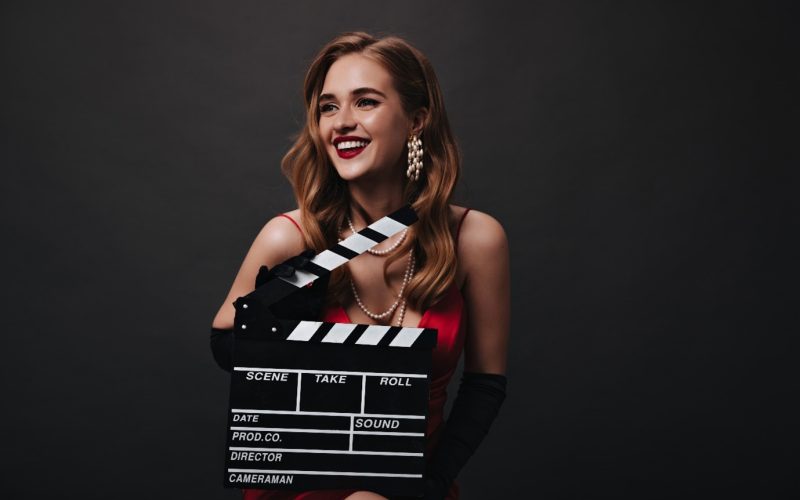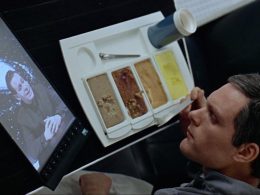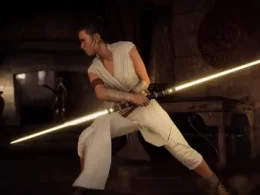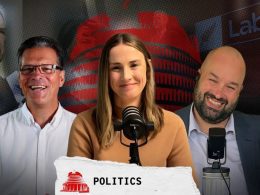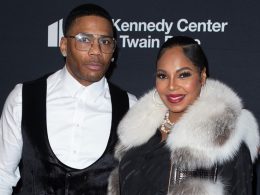Introduction
Fashion has always played a pivotal role in the world of film and television. Not only does it help to define characters and set the tone for different periods and genres, but it also reflects and influences societal trends. From the glamorous gowns of the Golden Age of Hollywood to the eclectic styles of contemporary TV series, fashion in film and TV has undergone significant evolution. This article explores this fascinating journey, highlighting key moments and trends that have shaped the industry.
Early Beginnings: Silent Films and the Birth of Cinema
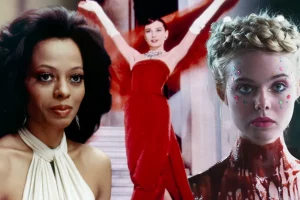
In the early 20th century, the advent of silent films marked the beginning of a new era in entertainment. Fashion in these early films was often dictated by the limitations of black-and-white cinematography. Costumes needed to be bold and exaggerated to stand out on screen. Actresses like Clara Bow and Louise Brooks became style icons, with their flapper dresses and bobbed haircuts epitomizing the Roaring Twenties.
The Golden Age of Hollywood: Glamour and Elegance
The 1930s to the 1950s is often referred to as the Golden Age of Hollywood. During this period, fashion in film reached new heights of glamour and sophistication. Costume designers like Edith Head and Adrian became household names, creating iconic looks for stars like Audrey Hepburn, Marilyn Monroe, and Grace Kelly. Films such as “Breakfast at Tiffany’s” and “Gentlemen Prefer Blondes” showcased elegant gowns and chic ensembles that continue to inspire fashion today.
The Swinging Sixties: Revolution and Rebellion
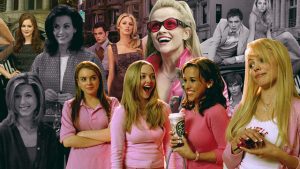
The 1960s brought a wave of cultural and social change, and fashion in film and TV reflected this revolution. The era was characterized by bold colors, geometric patterns, and a sense of youthful rebellion. Movies like “Blow-Up” and TV shows like “The Avengers” featured mod fashion, with mini skirts, go-go boots, and psychedelic prints becoming the norm. Actresses like Twiggy and Jane Birkin became style icons, influencing both on-screen and off-screen fashion.
The Disco Era: Glitz and Glam
The 1970s saw the rise of disco culture, which had a significant impact on fashion in film and TV. Movies like “Saturday Night Fever” and TV shows like “Charlie’s Angels” showcased the glitzy, glamorous style of the era. Bell-bottoms, sequined dresses, and platform shoes became iconic looks. Costume designers embraced the use of synthetic fabrics and bold accessories, creating a sense of opulence and extravagance.
The Power Dressing of the 1980s
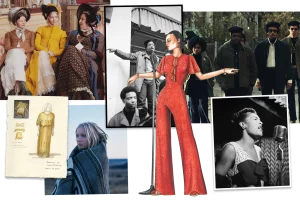
The 1980s were marked by a sense of excess and power dressing. Fashion in film and TV reflected this with bold, structured silhouettes, shoulder pads, and vibrant colors. TV shows like “Dynasty” and “Miami Vice” epitomized the era’s fashion trends. Designers like Giorgio Armani and Versace became influential, creating looks that conveyed confidence and authority. The decade also saw the rise of the music video, with artists like Madonna and Michael Jackson becoming fashion icons in their own right.
The Grunge and Minimalism of the 1990s
The 1990s brought a shift towards grunge and minimalism in fashion, both in film and TV. Movies like “Clueless” and TV shows like “Friends” showcased the casual, laid-back style of the decade. Flannel shirts, ripped jeans, and slip dresses became popular, reflecting a move away from the opulence of the previous decade. Designers like Calvin Klein and Marc Jacobs embraced minimalism, creating simple, clean lines that defined the era.
The New Millennium: Diversity and Individuality
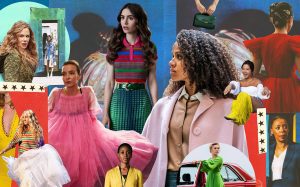
The 2000s and beyond have seen a greater emphasis on diversity and individuality in fashion. Film and TV have embraced a wide range of styles, reflecting the increasingly global and interconnected world. Shows like “Sex and the City” and “Gossip Girl” have showcased high fashion, while movies like “The Devil Wears Prada” have highlighted the inner workings of the fashion industry. Costume designers have become more experimental, blending different cultures and eras to create unique looks.
Conclusion: The Ever-Changing Landscape of Fashion in Film and TV
Fashion in film and TV is a dynamic and ever-evolving landscape. It not only reflects the cultural and social trends of different eras but also influences them. From the early days of silent films to the diverse and eclectic styles of today, fashion has played a crucial role in shaping the visual narrative of film and TV. As the industry continues to evolve, it will be fascinating to see how fashion continues to adapt and inspire.
In conclusion, the evolution of fashion in film and TV is a testament to the power of visual storytelling. It is a reflection of our changing society and a source of inspiration for future generations. Whether it’s the glamorous gowns of Hollywood’s Golden Age or the bold, experimental styles of contemporary TV series, fashion in film and TV will always be an integral part of the storytelling process.






